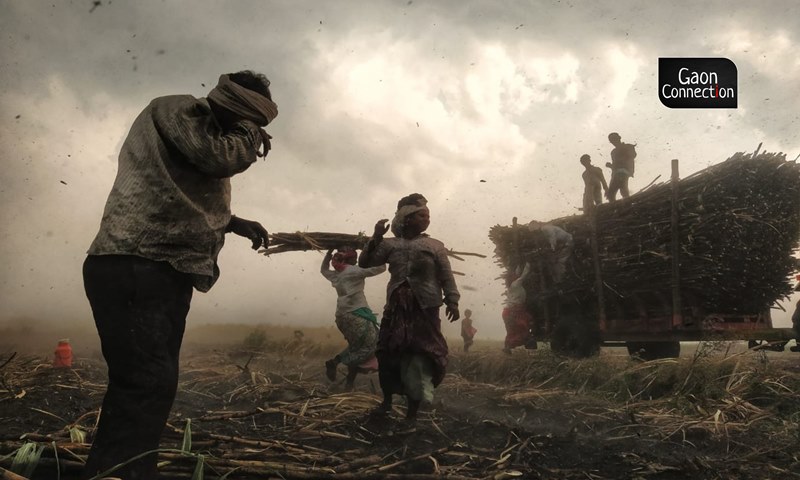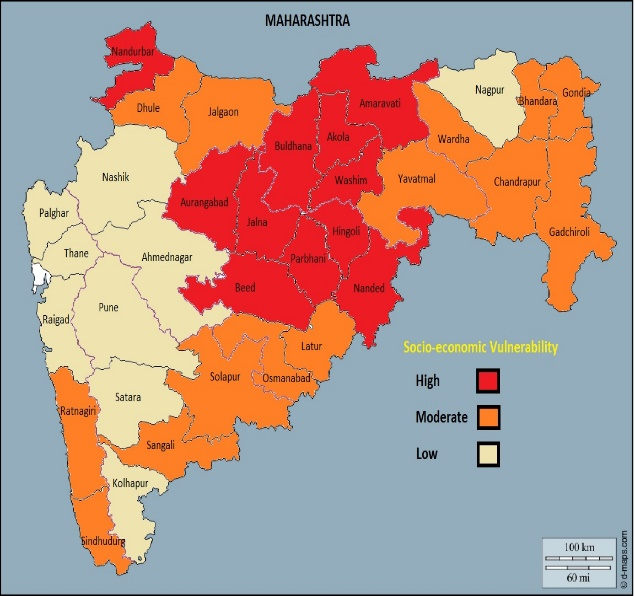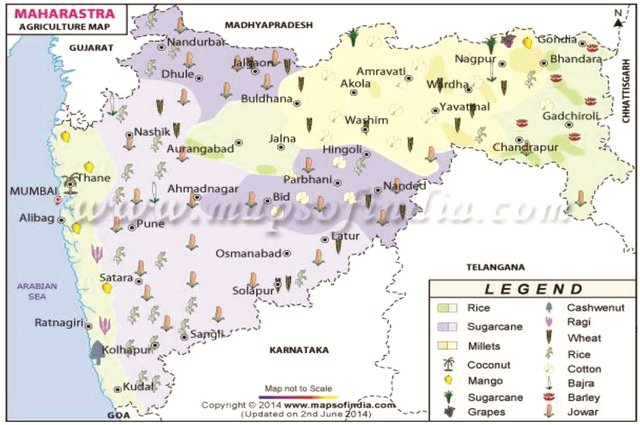Three-quarters of Maharashtra’s cropped area vulnerable to extreme weather events: ICAR
A new study by Indian Council of Agricultural Research (ICAR) shows that 77 per cent of Maharashtra’s cropped region is vulnerable to climate change, droughts and dwindling water security. Changing crop patterns is a possible solution, experts say.


In the rising extreme weather events in the state, farmers are the most vulnerable. Photo: Abhishek Verma/Gaon Connection
Last month, Maharashtra witnessed one of its worst floods in recent times. As many as 149 people lost their lives due to the rain-related incidents in the state. Districts such as Satara, Kolhapur, Raigad, Sindhudurg and Akola were badly inundated, as crops over large tracts of land were destroyed.
In the rising extreme weather events in the state, farmers are the most vulnerable, as has been pointed out by various research studies.
Now a new study by Indian Council of Agricultural Research (ICAR) has found that 24 districts of the total 36 districts in Maharashtra are vulnerable to extreme weather events, droughts and dwindling water security.
Simply put, almost three-fourths of Maharashtra’s cropped region is vulnerable to the increasing extreme weather disasters and the climate crisis, points out the study by the central government’s institute.
Also Read: Maharashtra’s food output to fall sharply as a result of climate change post 2033: Study
The research study, titled ‘Socio-economic vulnerability to climate change – Index development and mapping for districts in Maharashtra’, released today on August 6 revealed that extreme climate conditions highly affect the livelihoods and agrarian economy of Maharashtra.
According to the State of India’s Livelihoods Report 2019, farming is the prime livelihood source for 51 per cent of Maharashtra’s population.
The central government institute has warned that 77 per cent of Maharashtra’s cropped region is highly to moderately vulnerable to the prevailing climate crisis.

Nandurbar, the most vulnerable
In the recent ICAR study, the tribal dominated district Nandurbar in north Maharashtra was found to be the most vulnerable district to cyclones, floods, droughts, changing rainfall patterns and extreme temperatures affecting its crop production.
“Other highly vulnerable 10 districts include Buldhana, Beed, Jalna, Aurangabad, Hingoli, Parbhani, Nanded, Akola, Amravati, Washim,” Chaitanya Adhav of ICAR-National Dairy Research Institute (NDRI), Karnal, Haryana, was quoted in the press statement. Adhav conducted the study with the support of R Sendhil from ICAR-Indian Institute of Wheat and Barley Research.
The study also lists down 14 districts as moderately vulnerable. These include Dhule, Jalgaon, Ratnagiri, Sindhudurg, Sangli, Solapur, Osmanabad, Latur, Yavatmal, Wardha, Chandrapur, Bhandara, Gondia and Gadchiroli.
The dominant crops from these districts are expected to bear the brunt of the climate crisis, inform the researchers. Farming of jowar (sorghum), rice, wheat, sugarcane, cotton, ragi (finger millet), cashew nut, barley, millets could get adversely affected in future, warned the study.
Meanwhile, nine districts including Palghar, Thane, Raigad, Nashik, Satara, Kolhapur, Ahmednagar, Nagpur and Pune were found to be least vulnerable to climate agricultural distress as per the ICAR study.

Maharashtra farmers highly vulnerable
“Farmers in Maharashtra are extremely vulnerable to high-impact weather events. The last decade alone has shown us severe droughts in 2014, 2015 and 2018, massive hail storms in 2014 and 2015, and excess rainfall in 2016, 2019 and 2021 that led to significant flooding in western parts of the state,” Akshay Deoras, independent meteorologist, was quoted as saying in the press statement.
“The situation has recently aggravated a lot for the Konkan coast with impacts due to tropical cyclones Nisarga and Tauktae in 2020 and 2021, respectively, and significant floods this year,” he added.
According to Deoras, in the absence of proper irrigation in most of the state, which mainly includes Marathwada and Vidarbha regions, fluctuations in the monsoon rainfall affects sowing and crop growth, resulting in high vulnerability to the crop yield.
While there is a lot of discussion about impacts of climate change on agriculture, there is very little on ground action that has been taken, Vijay Anna Borade, agriculture expert and Trustee of the Marathwada Sheti Sahayak Mandal (MSSM), was quoted as saying. “What we are witnessing now is concerning because on one hand the number of rainy days in a year have reduced drastically while on other hand areas in Marathwada, which usually receive very little rainfall, are now being flooded,” he said.
Changing cropping patterns
Experts pointed out that the lack of a robust weather-forecast dissemination system adds to the vulnerability. “Whilst weather and crop advisories are sent through various channels such as the Centre’s mKisan portal (a text message service), such services need to improve so as to make a significant positive impact on farmers,” suggested Deoras.
As per the ICAR study, field demonstration to farmers, information dissemination through early warning systems was a must strategy to address these climate impacts that needs to be initiated at the village level.

Meanwhile, Borade suggested that changing crop patterns is a solution keeping in mind the vulnerability of the districts. However, “it’s not going to be such an easy task.”
He suggested creating parallel programmes such as adequate drainage, drip irrigation, crop rotation, to get stability in crop productivity and stable income of farmers. “Only then can we divert farmers to change their crop pattern,” he said.
“Another option is controlled farming which also has financial limitations. Thus, we need a viable and sustainable plan to enable Maharashtra to tackle the impacts of climate change on farming,” he added.

